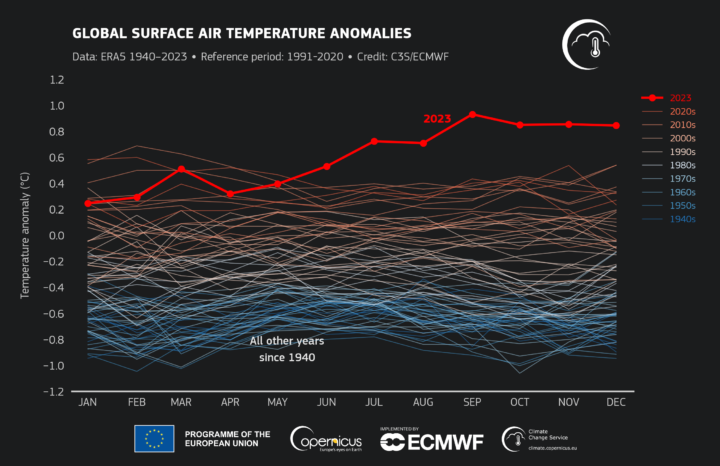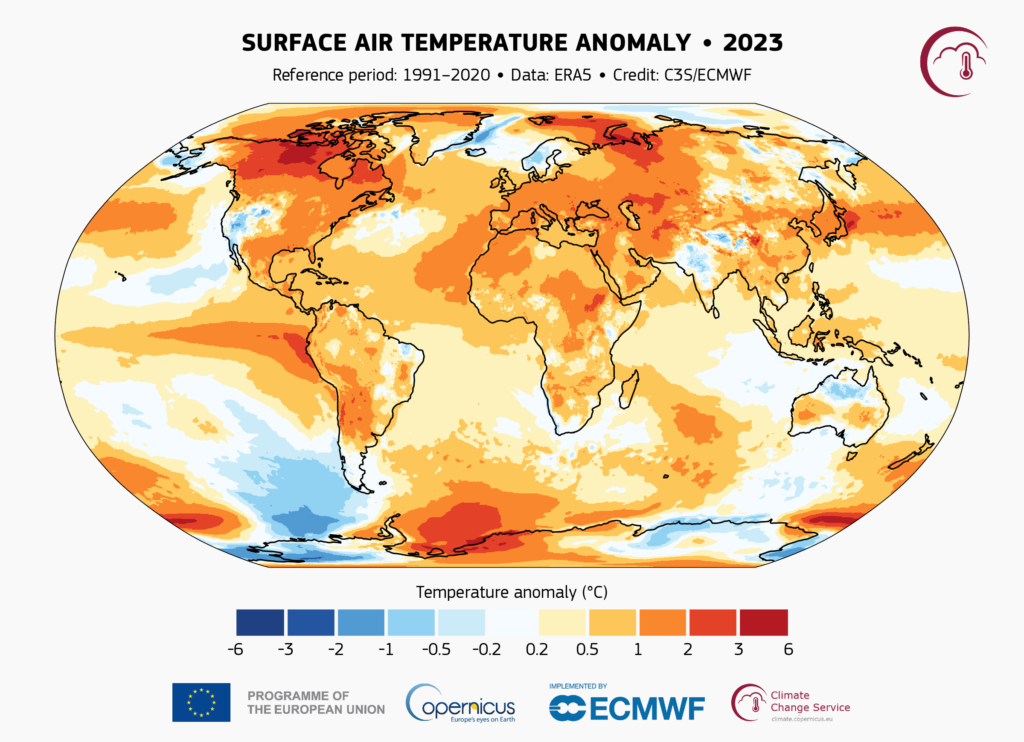The year 2023 was the hottest on record, with the temperature in the world approaching the warming limit of 1,5ºC compared to the pre-industrial era, the European Copernicus program announced today.
According to the data, 2023 had a global average temperature of 14,98ºC, 0,17ºC more than 2016, which held the title of hottest year since records date back to 1850.
The Copernicus data, which has among its various services one that monitors climate change and another the atmosphere, reveal that last year was 0,60ºC warmer than the 1991-2020 average and 1,48ºC warmer compared to the pre-industrial period (1850-1900).
Copernicus highlights, in a statement, that almost half of the days in 2023 were more than 1,5ºC warmer than those in the pre-industrial era, with two days in November being more than 2ºC warmer compared to the same for the first time. period.
For the first time also, in 2023, every day of a year had temperatures at least 1ºC above the pre-industrial level, with the Copernicus climate change monitoring service estimating that the global average temperature could exceed 1,5ºC that of pre-industrial era over a 12-month period ending in January or February 2024.
If this estimate is confirmed, the target established in the Paris climate agreement, which in 2015 set the limit for the increase in the global average temperature at 1,5ºC in relation to the pre-industrial level, would be defeated.

According to data released today by Copernicus, 2023 was, after 2020, the second hottest year in Europe, where the temperature rose by another 1,02ºC compared to the 1991-2020 average.
The extent of sea ice in Antarctica reached historic lows in February 2023, remaining at record low concentrations for eight months.
According to the Copernicus atmosphere monitoring service, concentrations of carbon dioxide and methane, polluting gases that contribute to global warming, continued to increase last year and reached record levels, respectively 419 ppm (parts per million) and 1.902 ppb (parts per billion, billion).
Due largely to forest fires that raged for several months in Canada, global carbon emissions caused by fires increased last year by 30% compared to 2022, according to Copernicus estimates.
Data from Copernicus, a European Earth observation program managed by the European Commission, also highlights that global average sea surface temperatures were “persistently and exceptionally” high in 2023, reaching record levels for the time of year between April and December, being associated with marine heat waves in the Mediterranean, Gulf of Mexico, Caribbean, Indian Ocean, North Pacific and North Atlantic.



















Comments